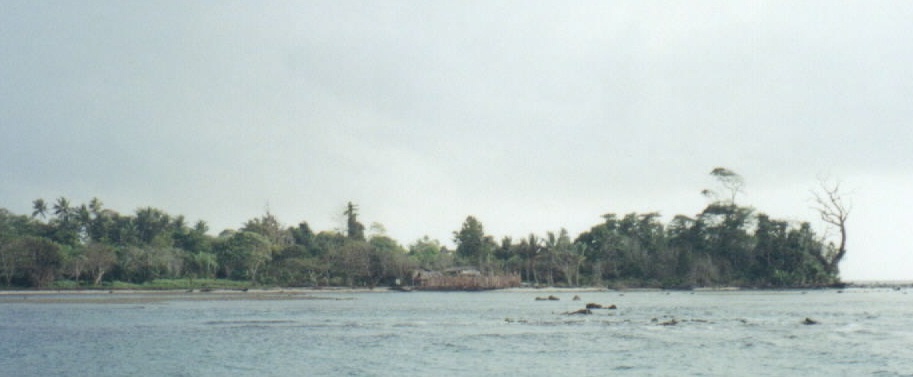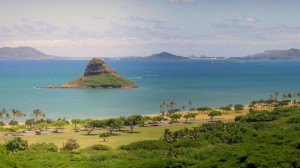By living-pterosaur expert Jonathan Whitcomb
The following are the words of a native of Papua New Guinea. He will begin leading an expedition, we hope within a few weeks, on Umboi Island. The ropen search will probably last longer than any previous living-pterosaur expedition ever conducted in this area of the world.
Be aware that what follows are answers to specific questions regarding health precautions for expedition members, videotaping times, and getting local village permission to search particular jungle locations.
Also be aware that not all of these plans and ideas are necessarily completely what I would agree with or with what my own priorities would be if I were leading a ropen expedition on Umboi Island. With that said, I expect that this native will have more success than I had when I searched for ropens on that tropical island.
1: Health=health & safety are paramount issues in any field related physical or chemical tasks. Thus, my boys have to know how to get right dose based on prescriptions. So 4 able young men who have a fair bit of education will be entrusted to do this job in 4 different expedition camps. THERE ARE MANY PRIMARY AND HIGH SCHOOL DROPOUTS IN TARAWE VILLAGE ON UMBOI ISLAND, WHO WILL BE NOMINATED TO DO THIS JOB.
Tropical jungle diseases like malaria, cold, fever and flu are common and their symptoms are quit easy to detect and will direct the boys on what drugs to take for cure.
Remember, any serious casualties and serious illnesses which we can not interpret will be referred straight to German built health center to Finchaffen across Vitiaz Strait through rough seas. If that referral needs serious medical treatment or operation, then the patient will be transported further to Lae city on the same speed boat.
2: Filming times=
(i) At dawn a close watch is essential. It starts at 4:30 am till 5:30 am when sun comes up. Within this 1 hour period is the time birds wake up from their nests and sing. This is the crucial time when Ropen has always been seen to fly over tree canopies from one place to another. Timing of 6:30 am – 7:30 am are to be considered too because anything can happen within this time frame as jungle darkness will be evident by tree canopies and mountain clouds and fogs cover.
(ii) at dusk all cameras will be manned vigilantly at 5:45 pm-7:00 pm because this is the period Ropen is hungry and would want to feed on anything edible. Locals believe that this is the time it returns to its home from hunting trips from place to place. 4:30 am-5:45 am is on crucial watching time too because of cloud covers that make jungles gloomy and dark too quickly. REMEMBER, ROPEN HAS A CHARACTERISTIC THAT FAVOURS THESE TIMINGS.
(iii) daylight filming is 100% on because anything can pop up during day. But occasionally, chances of filming Ropen during daylight is slim.
(iv) Camera flash lights are vital. Greg Hedger’s Panasonic Full HD camcorder (5.1 inch, 29.8 mm wide and 20.4 mega pixel) has potential to do this night vision job. I need 4 digital cameras with flash lights that will support this camcorder. At least 4 Canon cameras with 10.0 mega pixels will do. EVIDENTLY NO STILL CAMERAS TO AFFORD SO WILL EMPLOY NATIVES TO USE JUNGLE KNOWLEDGE ON HOW TO AMBUSH AND HUNT WILD ANIMALS DURING HUNTING BY HIDING HUMAN SCENT AND TRACES THAT WILL SCARE ITS APPROACH FOR BAIT THAT WILL LURE IT.
3: Permission for Sacred Sites=It is a MUST THING. I have to get special permissions to film and I have to do it because without release I might face obstacles. Some of these taboo grounds got human bones that are used for spiritual worships.
Bones are remainants of grave yard dug by ropen for its food. Taboo sites are attached with evil spells. Traditionally, if someone trespasses without permissions, he/she faces death. TO CATER FOR ANY OPPOSITION FROM CUSTOMARY LAND LORDS, I GOT TO PAY SOME MONEY TO MAKE EASY ACCESS TO THESE SPIRITUALLY POSSESSED ZONES. SO JUNGLE JUSTICE IS EVIDENT ON UMBOI ISLAND TERRAINS.
.
Near Lab Lab on Umboi Island, Papua New Guinea (2004 expedition by Whitcomb)
###
.
Just weeks after my 2004 expedition on Umboi Island, the cryptozoologists Garth Guessman and David Woetzel interviewed Umboi native eyewitnesses with systematic interview forms . . .
.
How often we’ve been taught that all dinosaurs and pterosaurs became extinct millions of years ago, as if that were proven! But what if some are still living?
.
With the Christmas gift-giving season approaching, I offer the following three nonfiction books that I have written, each of them about evidences for non-extinct pterosaurs, what many Westerners call “pterodactyls.”
.
This includes the cryptozoology book Searching for Ropens and Finding God.
.




